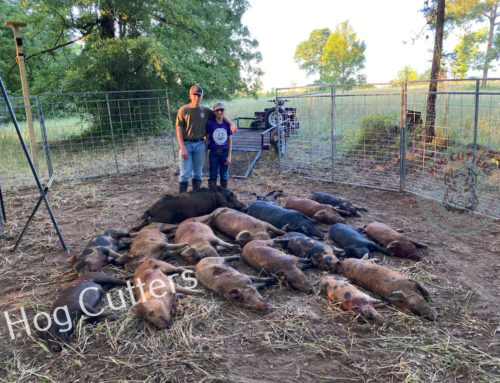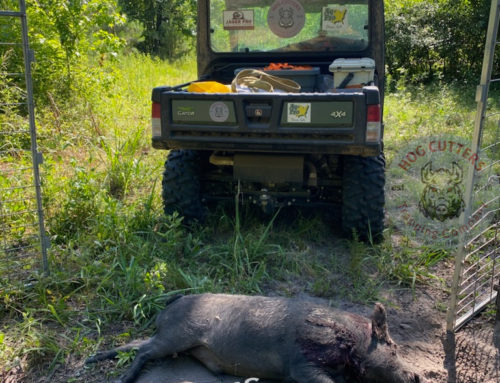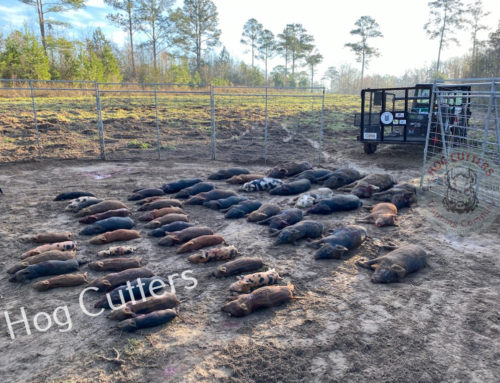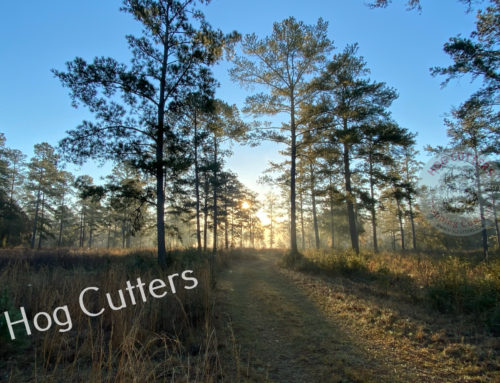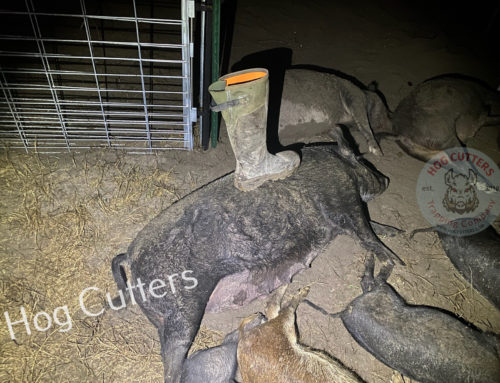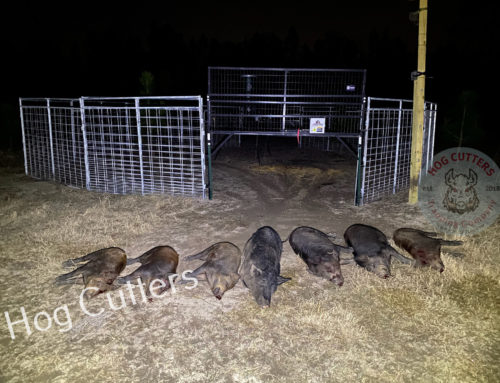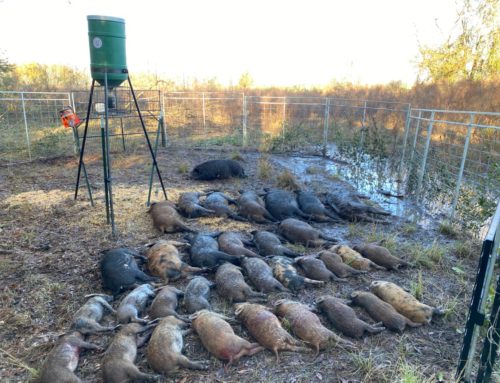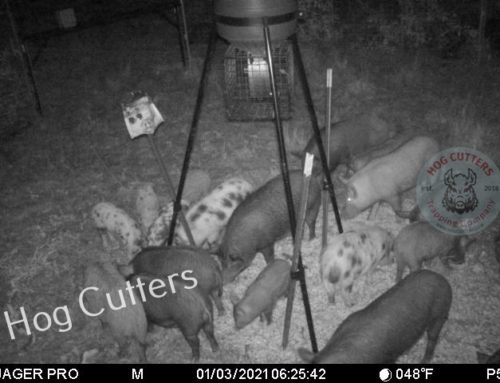Using the landscape to increase wild hog trapping success.
The 23 Square Mile Project sounders are a bit smaller lately, but that does not mean they are any less intelligent or wary than their predecessors. In fact, as we eliminate the groups of less educated hogs, the sounders moving out of the swamps or from neighboring properties are often experienced with outdated or ineffective hog control methods.
Hog Cutters uses a variety of methods to overcome the education factor. One of which is to incorporate trees or bushes from the landscape inside and outside the trap.
The trap used to capture the hogs in today’s post utilizes this technique. While placing the trap along the wild hogs natural travel corridor from a marsh area, we arranged the panels to enclose a group of young pines.
The pines act to improve the trap in a few ways;
- The small trees act as visual camouflage of the trap interior.
- The trees offer an area the hogs associate as shelter from danger.
- The area serves to impede the hog’s momentum when they are in panic or “flight” mode.
When he was approaching this trapped sounder, Josey noticed some peculiar behavior by the large boar. While the other 6 hogs were panic-stricken and responding to Josey’s actions, the boar remained tucked into the pine cover. He would quietly creep to the edge and poke his head out. The other hogs behavior would send him back into his supposed hideout. The boar repeated this action several times. Even after being dealt a lethal wound.
Witnessing this behavior play out, Josey feels firmly the choice to utilize part of the landscape to increase the hogs perceived comfort level is a good one.
Wild hog trapping is not a quick endeavor. Trappers need to consider all the options available to improve the attractiveness of the bait site and ultimately the trap. Using what is in the hogs habitat already is one way to improve the speed of the Success Matrix. Condition, Condition, Capture.


